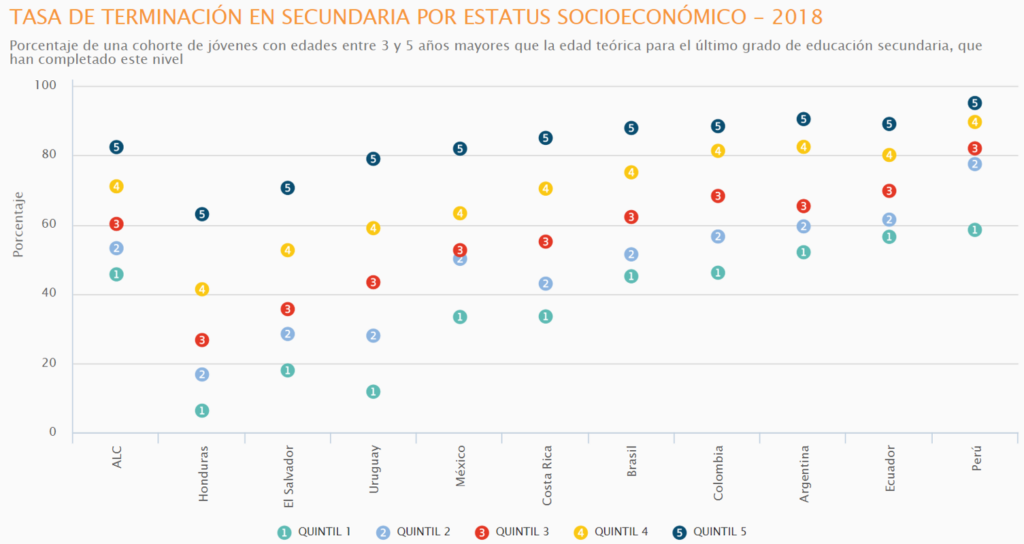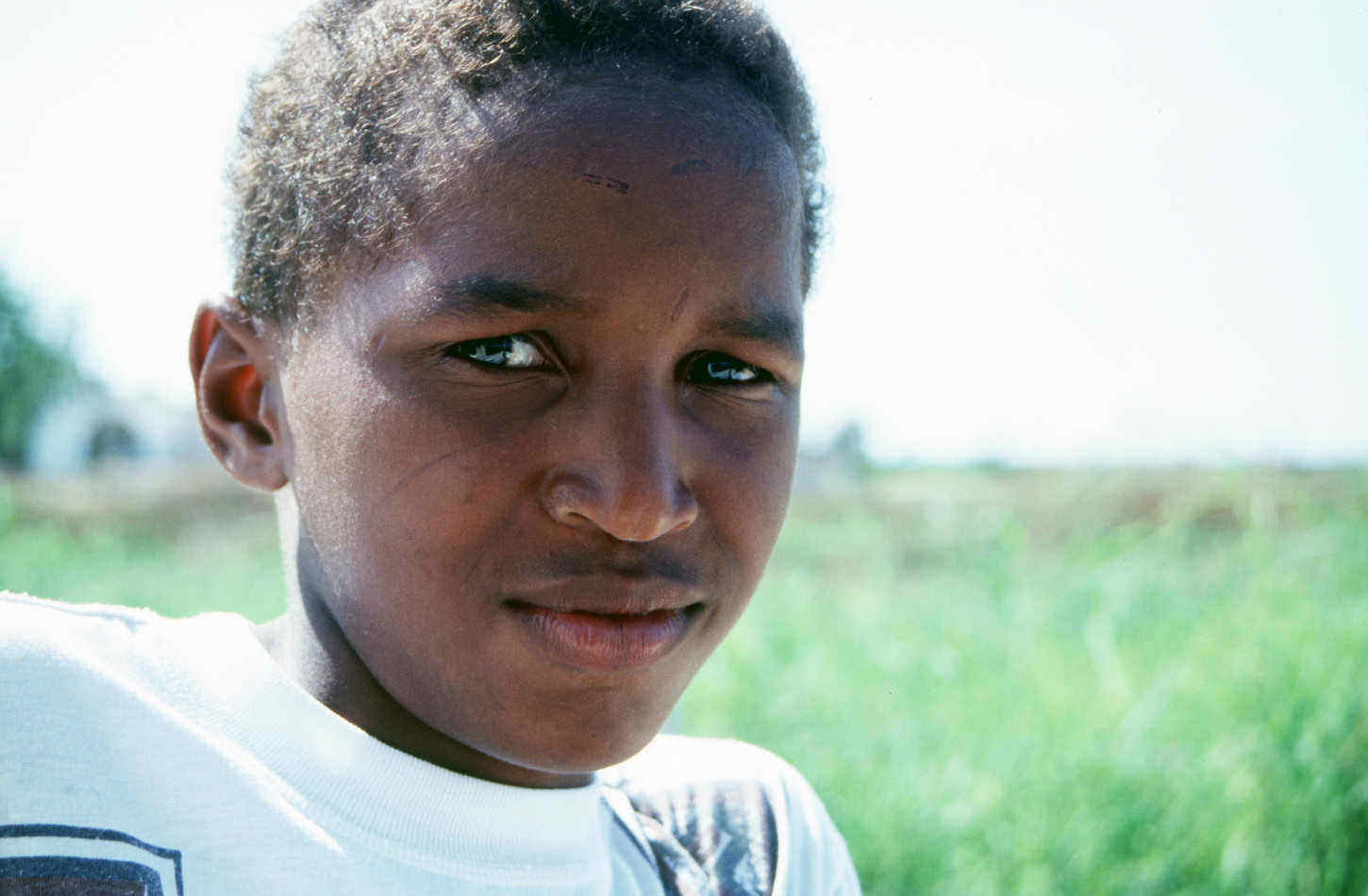Entry by Marcelo Pérez-Alfaro, Pablo Zoido y Gonzalo Muñoz.
The exit from the pandemic with its progressive reopening of classrooms will have important effects on educational systems. The current scenario will affect learning achievements and amplify the dropout and unschooling risks. Preliminary calculations indicate a 17% increase in educational exclusion: 1 million students will stop attending schools[1]. The economic and social crisis increases the probability of school dropout. Remote emergency education – the norm today in the continent – faces barriers such as the education systems’ degree of preparation for this modality, the lack of devices and connectivity in homes and the difficulty of maintaining students and their families motivated and committed.
This aggravates the situation in the region: the interruption of educational paths has been, since before the pandemic, one of the most urgent and pressing problems of the school systems in Latin America. According to the CIMA data platform[2], on average one in five young people between the ages of 15 and 17 – one of the most critical phases for staying or dropping out of school – did not attend an educational center in 2018. Furthermore, though the secondary completion rate is 64%, there is a marked difference by socioeconomic level of up to more than 50 percentage points between poor students (quintile 1) and rich students (quintile 5) (see graph). Uruguay presents the widest gap, with 12% among poor students and 79% among rich students. This type of exclusion increases the chances that these excluded children and youth will later on fall or remain in poverty and decreases their opportunities to integrate into social and working life.

% of cohort with 3 and 5 years more that the theoretical age in the last grade of high school that has completed that school level
Source: CIMA, https://cima.iadb.org/es/regional-overview/efficiency/completion
Educational exclusion harms the right to education and must be addressed with the highest possible priority and sense of urgency (UNICEF, 2018). This force educational systems of Latin America to redouble efforts on different levels to avoid and be able to contain this situation. This requires systemic responses based on evidence, integrating what we know about educational exclusion in the continent and the world.
The available evidence[1] indicates that, although part of the challenge resides on schools and can be managed by themselves, school exclusion and interruption of educational trajectories is a multifactorial phenomenon influenced by socioeconomic, family and cultural variables, among others, which requires highly complex policies and practices.
One of the challenges for Latin America and the Caribbean is to advance in the construction of what we dare to define as “School Trajectories Protection Systems”. Uruguay, through its Sistema de Protección de Trayectorias Educativas, implemented since 2016; Chile, through the progressive growth of its Sistema de Alerta Temprana and the recent identification of a broad set of actions to prevent exclusion; or Mexico, which for more than 15 years has consolidated its Peraj mentoring initiative; have all walked in that direction, implementing policies specifically aimed at avoiding the student exclusion.
Outside the region, some successful strategies are based on effective monitoring combined with interventions at different levels. In the case of Finland, they have a multidisciplinary approach based on intensification interventions for those students who are lagging, with more instructional time and alternative approaches to the teaching and learning process. A trajectory protection system should consider, particularly in a context like the current one, at least the following:
- An early detection policy of students who require the most support. This implies the existence of information systems that integrates in real time the relevant data on students and their families, the deployment of national and local strategies for processing this information (taking advantage of the potential that artificial intelligence offers today), and the implementation of early warning models that allow schools to identify the cases with the highest dropout risk according to certain key variables and acting on time.
- A set of socio-educational support strategies that significantly reduce the dropout risk. These strategies can be varied (from the adaptation of the curriculum to home visits to ensure attendance). They depend on the context and must be implemented by schools based on the evidence provided by the information systems and the guidelines emanating from the national and sub-national levels. The school trajectories protection systems should promote and systematize this range of strategies for their knowledge and application.
- A set of resources and basic conditions so that schools can face the challenge of inclusion. The fight against educational exclusion requires improving and optimizing the resources that are key to this task. The school trajectories protection systems should ensure some minimum conditions, such as the availability of psychosocial teams that directly support students at risk or the training of teachers and managers so that they can address this challenge in the best possible way.
- A clear strategy for the reintegration of students who are outside the school system, such as the creation or expansion of re-entry schools, strengthening recovery and learning acceleration programs and the flexibility of the educational offer to adapt it to the needs of vulnerable populations such as young mothers, migrants or young people with significant educational delay but who after some years out of school wish to complete their basic education and obtain a degree.
The pandemic can severely affect students’ right to education and we are at the ideal moment to think about the best policies to hinder the growth of educational exclusion in our continent.
How can we motivate and support our children and young people so that they do not drop out of school? Do you know of successful experiences in your country? Share your opinion in our comment section or on Twitter mentioning @BIDEducacion #EnfoqueEducación.
[1] Respecto al análisis de los factores que inciden en la exclusión, ver por ejemplo: Wood, L., Kiperman, S., Esch, R. C., Leroux, A. J., & Truscott, S. D. (2017). Predicting dropout using student-and school-level factors: An ecological perspective. School Psychology Quarterly,32(1), 35–51, en https://psycnet.apa.org/record/2016-15743-001. Sobre las políticas e intervenciones, una buena síntesis de lietratura es la realizada en: Freeman, J., & Simonsen, B. (2015). Examining the impact of policy and practice interventions on high school dropout and school completion rates: A systematic review of the literature. Review of Educational Research, 85(2), 205-248; en https://journals.sagepub.com/doi/abs/10.3102/0034654314554431
[1] Acevedo, I.; Castro, E.; Fernández, R.; Flores, I.; Pérez-Alfaro, M., Szekely M.; and Zoido, P. (2020, fothcoming). Canales de transmisión del Covid-19 hacia la Educación.
[2] The Information Center for the Improvement of Learning (CIMA) for its acronym in Spanish is an innovative IDB platform that presents 40 comparable indicators across 26 countries in Latin America and the Caribbean and promotes the design and implementation of effective education policies based on the evidence in order to improve the quality of education.


Leave a Reply